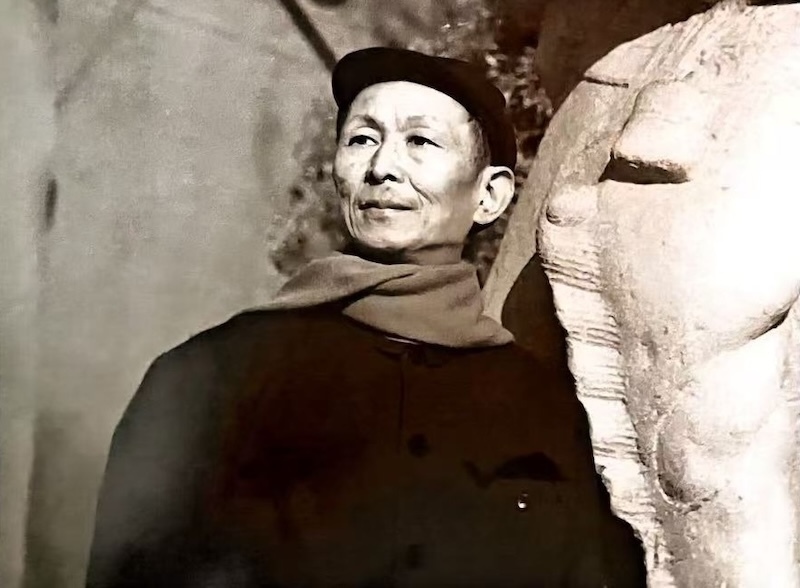
In the twenty-fifth year of Tang Kaiyuan (737), the Hellenistic art "Fufu painting" embodied in the line depiction of the stone coffin of Empress Zhenshun, does not pursue the realism of lions and humans, but reflects the sanctity of the coexistence of humans and lions. The picture exhibition The scenes showing heroes and warriors, bearded old men, and curly-haired youths walking with lions provide a source of images for leading, riding, and controlling lions.
From this series of pictures, after comparison with Dunhuang silk paintings, paper paintings, and murals in the middle and late Tang Dynasty, Kunlun slaves lead lions, Manjusri Bodhisattva rides lions, Khotan kings ride lions, etc., we can see the pulsation of artistic images from Chang'an to Dunhuang very close. The handed down works of cultural exchanges between the East and the West, through the gradual "huahua" of Greek art to Buddhist art, royal painters to Dunhuang painters, capital Chang'an to prefecture and county Dunhuang, this article reveals the spread of the Dunhuang painting Manjushri Bodhisattva "Fan Hu Leading a Lion" The reasons behind it have deciphered the ins and outs of the classic art of "Manjusri Bodhisattva's new appearance" for thousands of years, and demonstrated the outstanding style of cultural exchanges in the prosperous Tang Dynasty.

Left: Typical heroic figures in Greek-Byzantine theogony. A man with a long beard leading a lion. Right: A Dunhuang white painting of Manjusri riding a lion.
1. The spread of lion art from west to east
African lions, which originated 120,000 years ago, began to walk out of Africa about 20,000 years ago, and reached India in Asia as far as possible, but the living area of lions became smaller and smaller during evolution. Sampling from ancient lion specimens in museums around the world found that The extinct North African Barbary lion and Iranian lion have left many artistic impressions in history.
In the ancient world, humans often compared and imagined the order of the human world with the order of the animal kingdom, citing the beasts at the top of the food chain as symbols of political and religious authority, and the media included language, decoration, rituals, etc. Due to differences in natural environments, the most representative beasts in different regions are not the same: lions had a prominent position in the ancient Near East, India, Central Asia, and even Europe in the classical era and the Middle Ages.
Among the comparative perspectives and materials that can be seen everywhere, the relationship between animals and religion is very close. Animal history phenomena in the ancient Near East, Greco-Roman, Persia, South Asia, India, and Central Asia grasslands abound. In particular, the lion has become a very eye-catching reference object in religious culture, and the lion is an important animal in inter-religious culture in medieval history.
In the areas where lions were born, various Mediterranean cultures from Egypt, Mesopotamia to Greece have various lion images, and their complex interactions have evolved into Christian and Iranian lion images. Various Indian religions also form rich images of lions. After the lions from the Mediterranean cultural circle and the South Asian cultural circle entered the Eurasian grassland, they produced a grassland-type lion image; when they entered China, they underwent "Huahua" interaction, resulting in a Chinese-type lion image. The interaction and evolution of lion images in world religions and cultures has not only produced the richness and variety of lion images, but also revealed the unique laws of human aesthetics in the interaction of religions and cultures.
The artistic image of lions originated in ancient Egypt and ancient West Asia. As early as the early days of the Old Kingdom, lion-shaped artworks appeared in Egypt. During the New Kingdom, especially the Eighteenth Dynasty (about 1567-1320 BC), the famous Tutanka The golden throne unearthed in the tomb of King Meng was later regarded as the seat of the golden lion bed by Chinese monks. The two gold lion heads on the armrest symbolize the divine power of the Pharaoh, while the four legs imitate the front and rear legs of a lion. At present, the earliest stone lions in the East found through archeology, and subsequent paintings, bronzes, etc. depict lions in lying, walking, kneeling, squatting and other postures. Long, human-lion fighting, etc., all prove that artists around the lion image made various creations until the lion shape matured in the 5th century BC.
The lion is a symbol of kingship in ancient Egypt, and the Great Pyramid of the Sphinx is an important position to show its authority. Later, ancient Greece, Rome, ancient Persia and other places had the spread of this lion art. "Sui Shu Biography of the Western Regions" records that "the king of Persia wears a golden flower crown, sits on a golden lion seat, adorns his beard with gold flakes, wears a brocade robe, and puts a wreath on it." "Old Tang Book Xirong Biography" also said that "it has a crown of golden flowers, sits on a lion bed, wears a brocade robe, and adds a wreath." It shows that Chinese people's understanding of Persian lions during the Sui and Tang Dynasties was not limited to religious art, but went deep into royal symbols.
In the 3rd century BC, Alexander of Macedonia brought Hellenistic culture to India. During the Mauryan Dynasty, the lion, a symbol of power, was accepted by Ashoka. The top of the Ashoka stone pillar that spread Buddhism was carved with a crouching lion as the top of the pillar. Four lions The shape of the Dharma wheel is promoted in all directions. Guishuang is the hub of the eastward spread of Buddhism. The Da Yuezhi people first introduced the Buddhist scriptures to China. In order to show that the Buddha is different from the traditional Indian gods, they further introduced lions into the Buddha's biography, and spread to Central Asia and the Western Regions along with the Hellenistic statue art of Buddhism. , After entering Xinjiang, it was quickly accepted by the Chinese people.
The lion has many symbolic meanings in the Buddhist tradition. Most of the Central Asian and Indian monks seen in Chinese medieval literature have the title of "Master" in order to call them eminent monks. The importance of lions stems from South Asian Buddhist traditions: lions are common beasts of prey in India, and many similes of lions can be found in Buddhist literature. In early Buddhism, the lion was the symbol of the Buddha himself, the Leo sign symbolized the preaching of the master, and the lion's roar was used as a metaphor for the act of propagating the Dharma. In addition, lions often appear in the names of people, places and artistic subjects.
In the Western Regions during the Han and Tang Dynasties, the acceptance of Buddhism was very rapid under the influence of the Kushan Kingdom. The rulers of the small oasis kingdom also promoted the lion worshiped in religion as an animal symbol of political authority and power. Volume 2 of "Biography of Eminent Monks" records that when Kumarajiva was enthroned in Kucha and preached, he was treated with courtesy by the king of Kucha who specially made a golden lion seat, and used the Daqin Brocade Mattress as a bedding. "Book of Wei" Volume 102 "Biography of Qiuci" also records that the king of Qiuci "has a ribbon on his head, hangs behind him, and sits on a golden lion bed". In the same volume 101, "Tuyuhun Biography", it is recorded that the Murong Xianbei nobles of Tuyuhun also "sit on the golden lion bed". Volume 2 of Xuanzang's "Da Tang Western Regions" records that at that time in India, "the throne of the monarchy was wide and high, and the pearls and jewels were intertwined, which was called the lion bed." Cave 275 of Mogao Grottoes in Dunhuang is one of the early excavated caves. There are lions on both sides of the square platform where Maitreya sits cross-legged. According to Buddhist scriptures, it should be "Shizizuo" or "Golden Lion Bed". This is the expression of the combination of lion shape and upper-level politics infiltrated into art.
After the lion was introduced from Persia to India, it was smeared with mythological colors. Both monks and laymen worshiped its divine power and symbolic kingship. Buddhist scriptures even endowed the lion with the status of the king of beasts in the animal kingdom. "Chinese lion", after being introduced to China, it also changed from a ferocious and frightening beast to a kind and friendly thing. Mr. Cai Hongsheng once pointed out: "There is a far-reaching channel for the spread of Western lion culture in China, which is Buddhist art. Monks use Buddhist paintings and statues to visualize the 'Lion King' in Buddhist scriptures."
2. From the brush painting on the stone coffin of Concubine Wu Hui to the Dunhuang sketch
Lions were introduced into China. According to historical records such as "Hou Hanshu", it should be in the Eastern Han Dynasty. In the second year of Emperor Zhanghe (88) of the Han Dynasty, the lion was rested and offered. In the thirteenth year of Yongyuan (101), Anxi King Manqu offered a lion. The origin of lion as a foreign word is also Iranian.
According to Buddhist scriptures, Manjusri Bodhisattva rides a lion to express wisdom and might. When did Manjusri Bodhisattva riding a lion become popular in the Tang Dynasty, and when did the lions of the Western Regions change from "exotic beasts" and "odd beasts" to "auspicious beasts"? In the twenty-seventh year of Tang Kaiyuan (739), the fourth volume of "Tang Liudian" "Where the auspiciousness should be seen, the name of the object should be identified", and there is no lion in Darui, Shangrui, Zhongrui, and Xiarui. The name may not be a "spiritual beast" popular among the people before the prosperous Tang Dynasty.
Zhang Yanyuan's "Records of Famous Paintings of Past Dynasties" said that in Chang'an City, "Ci'en Temple, the east and west of the pagoda are painted by Yin Lin, and the Bodhisattva rides a lion on the west and an elephant on the east". Duan Chengshi's "Youyang Zazu" in the Tang Dynasty records that in Baoying Temple, Daozhengfang, Chang'an, "there is a Maitreya frame painted by Han Gan in the temple, dressed in purple cassock, with a Bodhisattva and two lions facing up on the right, especially fascinating." The Bodhisattvas riding lions and elephants are Manjushri and Samantabhadra, and such murals have appeared in temples in Luoyang, Chengdu, Wutai Mountain and other places. Volume 3 of Enren's "Journey to the Tang Dynasty for Pilgrimage to the Tang Dynasty" said that in the late Tang Dynasty, the Bodhisattva Hall in Wutai Mountain "ridden a lion statue, and the five halls were full. , just like exercise."

Figure 1 Side view of the remnant stele of Xingfu Temple in the ninth year of Kaiyuan (721)

Figure 2 The side of the stele of Zen master Tang Dazhi in Xi'an Forest of Steles
There were not many images of lions in the early Tang Dynasty. From the Kaiyuan period of the 8th century, there were vivid and typical lion images. Xi’an Forest of Steles contains Buddhist stone carvings related to lions, such as Xingfu Temple in the ninth year of Tang Kaiyuan (721) The lion rider on the side of the remnant stele is actually sitting sideways on the lion's back, and there is a tasseled round carpet on the lion's back (Figure 1). In the twenty-fourth year of Kaiyuan (736), the stele of the "Great Wisdom Zen Master" is depicted on the side of the stele, which is a real god-man in silk and ribbons riding on a lion, surrounded by grapes and lilies (Figure 2). The running lion on the pedestal of the Sutra of Filial Piety on Shitai not only has deer horns on its head, but also has a leopard-print circle on its body. It should be said that the origin of the lion as the Buddha’s nobility, majesty, courage, and strength is related to the image of the lion as the king of beasts to highlight its noble status. A depiction of a Bodhisattva statue. In particular, on the relief painting on the stone gate of the underground palace in the prosperous Tang Dynasty in the Forest of Steles Museum, a Hu man wearing a fur head and a Tang suit is walking briskly with a short tame animal in one hand and a long iron chain for taming a lion in the other. The image of the lion rider after that (Figure 3).

Fig. 3 A picture of Hu people leading a lion in the Kaiyuan period of the Tang Dynasty in the Forest of Steles in Xi'an
At the same time, various stone carvings and line carvings on the stone coffins of Wei Li's tomb, Li Xian's tomb, and Xue Jing's tomb all show running lions in detailed and intricately decorated images. In the ninth year of Kaiyuan (721) in Shanxi, there are different shapes of running lions, elephants, mythical beasts, etc. in the depiction of the stone coffin of Xue Jing’s tomb. Among them, there is also an image of a lion rider on the column of the stone coffin. superior. (Figure 4)

Figure 4. Inside and outside the sarcophagus of Xue Jing’s tomb, tribesman rides a lion-shaped two-horned mythical beast
The last years of Emperor Xuanzong’s Kaiyuan period was the peak of the prosperous age. The highest grade and most exquisite art was carved on the stone coffin of Empress Zhenshun (Concubine Wu Hui) in the 25th year of Kaiyuan (737) (Figure 5). The pilasters inside and outside the stone coffin We have observed dozens of various characters, including heroes and warriors in myths and legends, as well as lion pullers, lion riders, and lion drivers in realistic costumes.

Figure 5: The image of a man holding a lion on the front of the stone coffin of Empress Zhenshun
The lion-leader, the image shows a strong man with a bald forehead, a collar, a long robe, a belt with a bag, and a silk ribbon wrapped around his body. He is leaning forward, pulling the rope with one hand and tying the knot with the other. In front of the chest, a male lion that is pulling its mouth and neighing is being pulled hard. This is a typical heroic figure in the Greek-Byzantine theogony. For a similar shape, see the image of Manjusri riding a lion on the white painting of Dunhuang.
The lion rider is a curly-haired warrior with rounded eyes staring straight ahead, holding a cane in his hand, riding on the back of a lion-shaped mythical beast running with his mouth open, and his legs clamping the lion's abdomen. He is probably a Greek and Roman mythology "Janus", who holds a cane and a key in his middle hand, is the "door god" who protects the safe passage of homes, streets and cities (Figure 6).
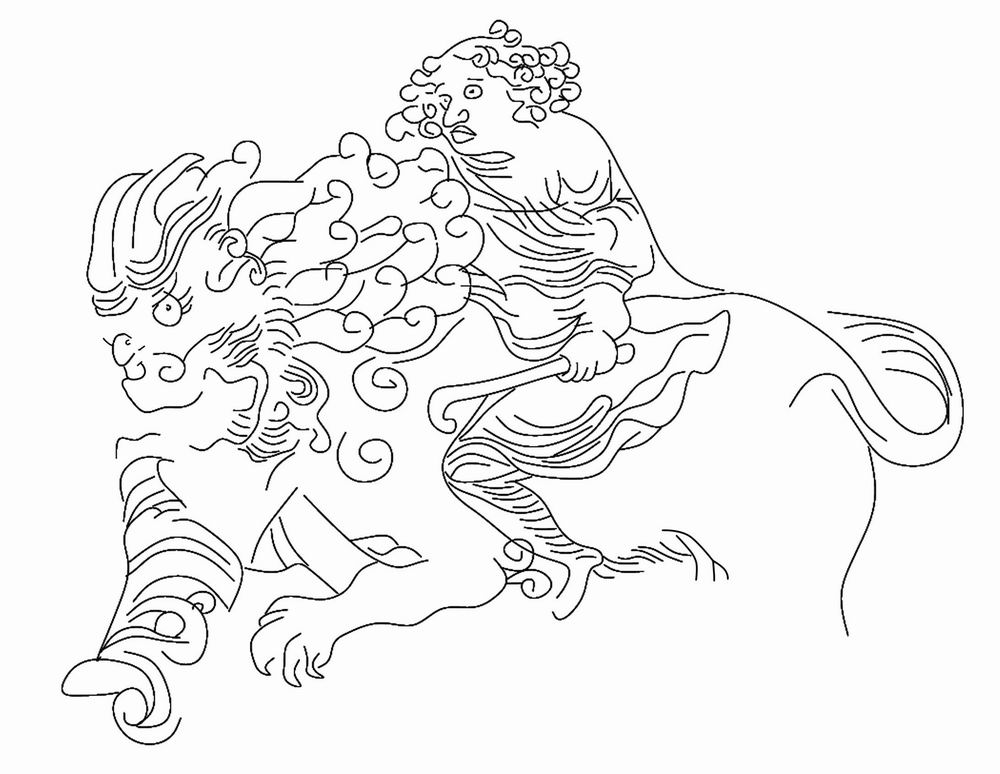
Figure 6: Statue of God with long beard riding a lion holding a walking stick
The lion driver, an old man with a cloth belt on his head, with long beard and beard hanging on his chest, his eyes wide open, wearing a short jacket with his sleeves rolled up, his arms tensed, pulls the lion with a rein, and the lion Grinning his teeth, he bowed his head and tried to break free. This old man is the old hero in Greek mythology, a majestic god of heaven.
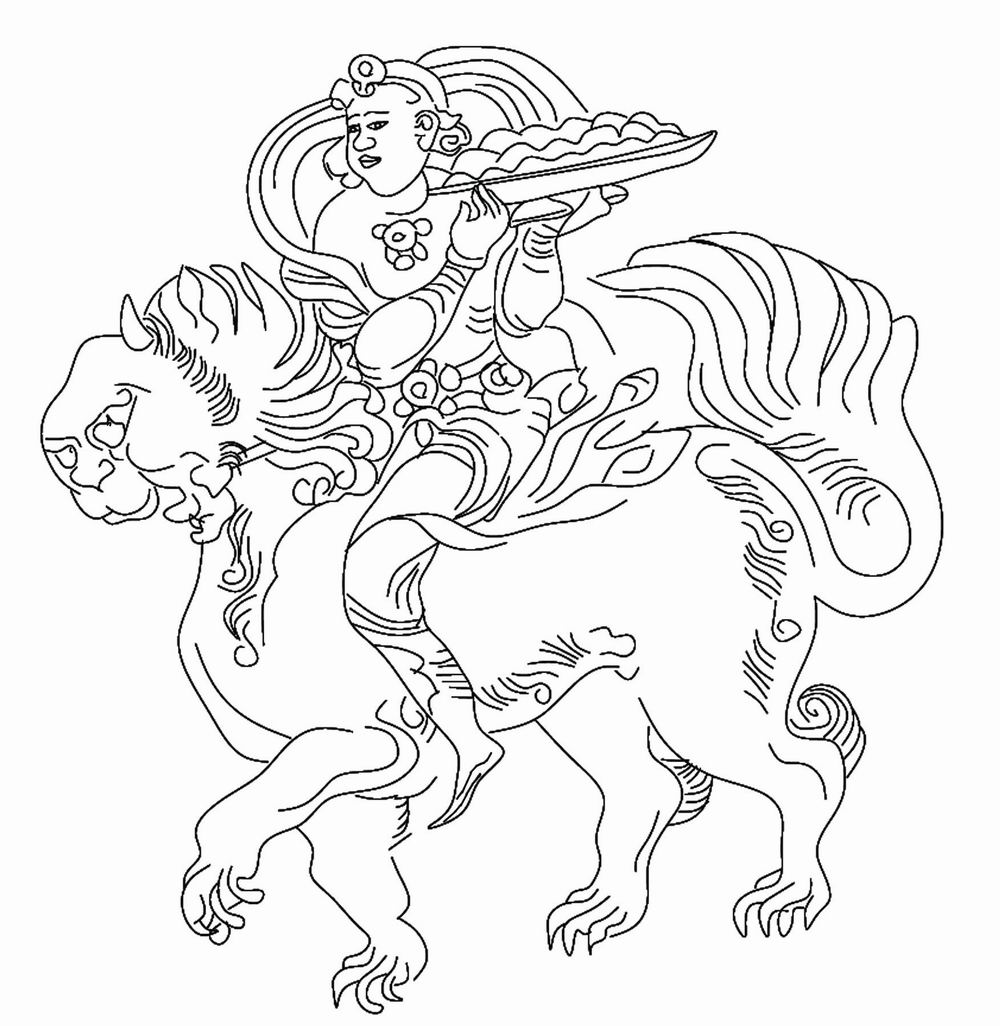
Figure 7 Holding a sacrificial plate and riding a god of beasts
There is also a young and handsome lion rider, holding a fruit plate dedicated to the Olympian gods, with a crown on his forehead, riding on the back of a lion, and walking forward (Figure 7). The foreign artistic styles in these images are lifelike, whether it is an old man with long beard or a young man with curly hair, or leading a lion to run or driving a lion, all of them are the characteristics of "Fushu paintings".
Judging from the shape of the above-mentioned lion, it is neither a Sassanid lion nor a guardian lion of Indian culture. The situation of ferocious lions such as pouncing cattle is different. The image of lions in the prosperous Tang Dynasty has another source. This is the "Fusu painting" that the author has talked about many times.
Fufu painting belongs to the Hellenistic art inherited by Byzantium. The biggest feature of its lion shape is the "divinity" of the beast. It is extremely dynamic, running or walking, with curly hair on its head, mouth and neck raised, four powerful claws, and a domineering demeanor. , often accompanied by heroes and warriors, bearded old men or curly-haired youths walking with lions, or leading, riding and controlling lions. They do not pursue the realism of lions, but reflect the sanctity of lions. In the Christianity popular in Byzantium, Christ is described as a lion, which symbolizes his power to save, while Satan appears as a lion, which is a symbol of evil. The cultural value of lions lies in the different objects of religious symbols.
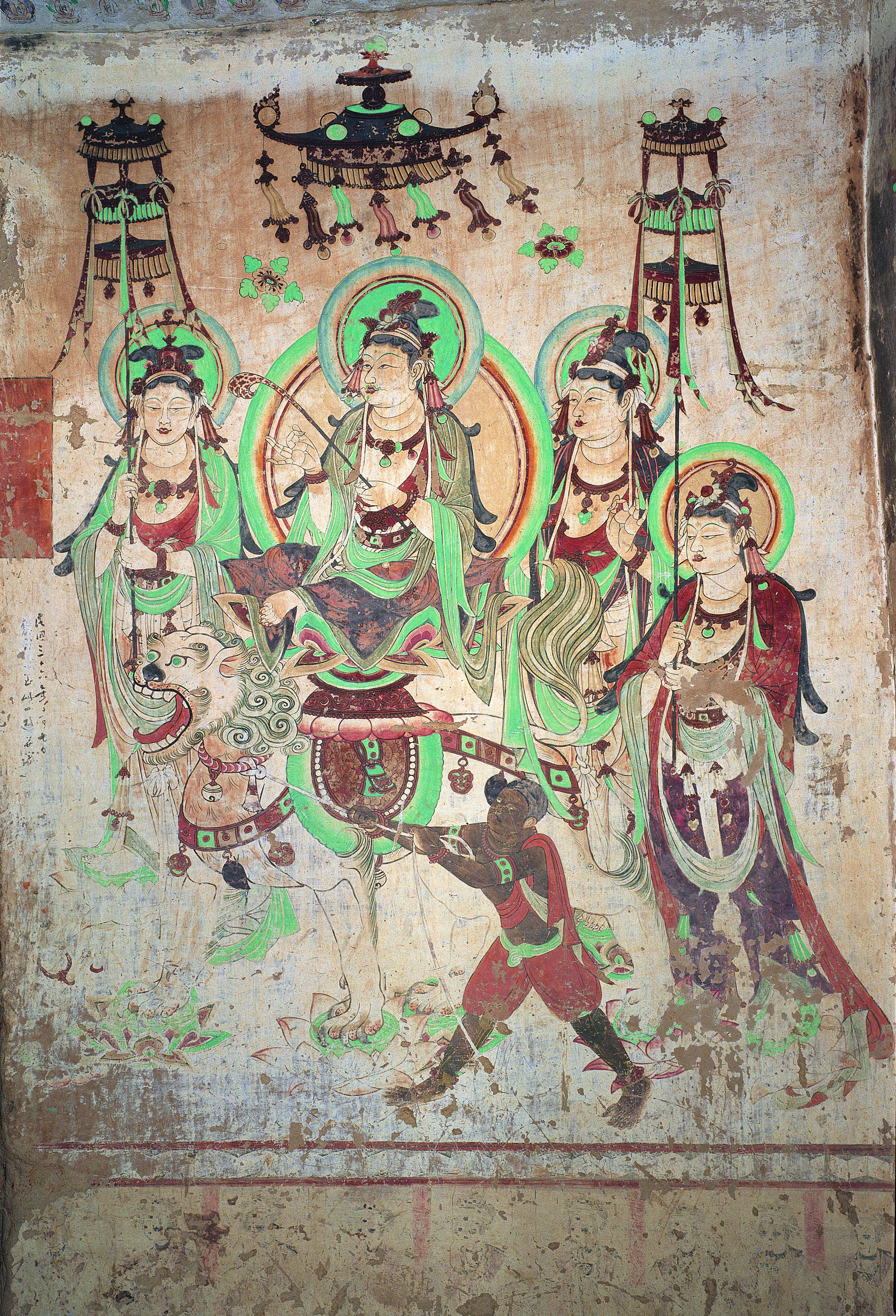
Fig. 8 Cave 25 of Yulin Grottoes - the north side of the west wall of the main chamber - Manjusri Picture - Mid-Tang Dynasty
The mural in Cave 25 of the Yulin Grottoes in Dunhuang depicts Manjusri Bodhisattva riding a green lion, with Kunlun slaves pulling the reins beside him. Objectively speaking, the lions in Buddhist paintings became more and more distorted in the late Tang Dynasty, mutating into a tiger head, a dog body, and blue and black. Not only did the Persian lion lose its image of opening its teeth and claws, but the Indian lion also retracted to "spit out its red and white tongue", that is, grinned and stretched out its mouth. The image of the tongue, and the lion sitting cross-legged by Manjusri is also wearing a gorgeous collar (Figure 8). At the same time, Cave 159 and Cave 468 of Mogao Grottoes also have the same type of Manjushri Bodhisattva riding a lion. They are all caves from the Middle Tang Dynasty, and the people who lead the lion are all Kunlun slaves. The above-mentioned records and depictions of lions only appeared after the heyday of the Tang Dynasty, that is to say, they were all after the 9th century, later than the images of lions on the stone coffins in Chang'an.
After being introduced to Dunhuang from the Chang'an powder version, the lion rider gradually played an important role as a bodhisattva, so it became a lion bodhisattva. This transformation and reconstruction endowed the Bodhisattva with more legendary color, which is beneficial to use the name of lion. Lions are also changing as people's ideas change. Lions and other animals are shaped by various cultural factors in history, and new art forms are constantly being created. Lions, accompanied by the artistic image of Buddha, have become part of the historical memory of Buddhists.

Figure 9 Manjusri Bian in Cave 159 of Mogao Grottoes, Middle Tang Dynasty
On the east side of the south wall of Cave 148 of Mogao Grottoes in Dunhuang, there are Manjusri murals in the mid-Tang Dynasty on the east side of the south wall, and on the west wall of Cave 112 and Cave 159. There are Manjusri Bian of the Mid-Tang Dynasty, in which Manjusri Bodhisattva is painted riding a lion. The scene is grand and the lion looks mighty. These image styles have never appeared in previous Dunhuang murals, and should be copied from Chang'an's painting books. For example, Cave 159 of Mogao Grottoes was excavated in the middle Tang Dynasty (Fig. 9). In this mural, Manjusri Bodhisattva holds Ruyi and sits on the back of a lion. The surrounding family members, the eight divisions of heaven and dragon, the guards of Brahma, and the vividly depicted heaven and man playing music, etc. As for Manjusri Bodhisattva not appearing alone, but together with others, this form was even later, and it was common in painting subjects from the late Tang Dynasty to the early Song Dynasty.
We can see patterns of lions and people on Byzantine period silk blankets found in Egypt, Syria and other places. In the Song Dynasty Li Jie's "Zao Fa Shi" collection of Fushu paintings, there is a "Chinese" image of a lion driver.
We used to say that the style of lion images was influenced by Persia, especially the Sasanian Persian period. This is a point of view that spreads along one line. In fact, there are multiple road networks from the west to the east. In China, it is called "Fufu painting The artistic modeling of Greco-Roman mythology inherited by Byzantium (Eastern Rome) cannot be ignored. The Sasanian Dynasty lasted for nearly 450 years. There were no images of lion pullers, lion riders, and lion drivers in its art. Most of them were bloody figures such as kings hunting lions or heroes assassinating lion monsters. Lions also Mostly winged lions or lion monsters. The depiction of the lines on the stone coffin of Concubine Wu Hui clearly shows that the Hellenistic art from Fusu was closely related to the Sui and Tang Dynasties in China.
Researcher Zhang Huiming believes that there was no statue of Manjushri Bodhisattva in Wutai Mountain during the Jingyun period of Emperor Ruizong of Tang Dynasty (710). With the introduction of Khotan Bodhisattva belief to the Central Plains, the status of Manjushri Bodhisattva began to rise. Therefore, it is speculated that the drawing of the base sample of the image may have come from the Zhaowu Jiuxing area, and was influenced by the image of the goddess Nana riding a lion in Sogdian art. The image of riding a beast has always been a traditional image in the art of Central Asia and West Asia. The four-armed goddess Nana either rides sideways on the back of a standing lion or sits horizontally on the back of a standing lion. The image of Goddess Na riding a lion needs to be further explored, because Goddess Nana belongs to the worship image of the Jacko religion, and does not belong to the same image system as Buddhism. constituent elements.
3. Utilization and transformation of picture books after the middle and late Tang Dynasty
The lion-leader, lion-rider and lion-tamer created by the royal painters and craftsmen of Chang’an based on foreign powder books can be widely used in the murals of temples in the capital and in the composition of grotto paintings in various places once a model is formed. Discovered in the Buddhist scriptures cave in Cave 17 in Dunhuang The drafts show that the art craftsmen at that time were fully prepared when they created. They had to hand-paint the mural drafts and copy the sketches with reference to the powder book. "Records" specifically pointed out that no matter whether the paintings are painted on paper or silk, they are all created based on powder books. The basic composition of the powder book can remain unchanged for a long time, but the details of the content can be improvised according to the technique, so as to further create a new style full of changes.
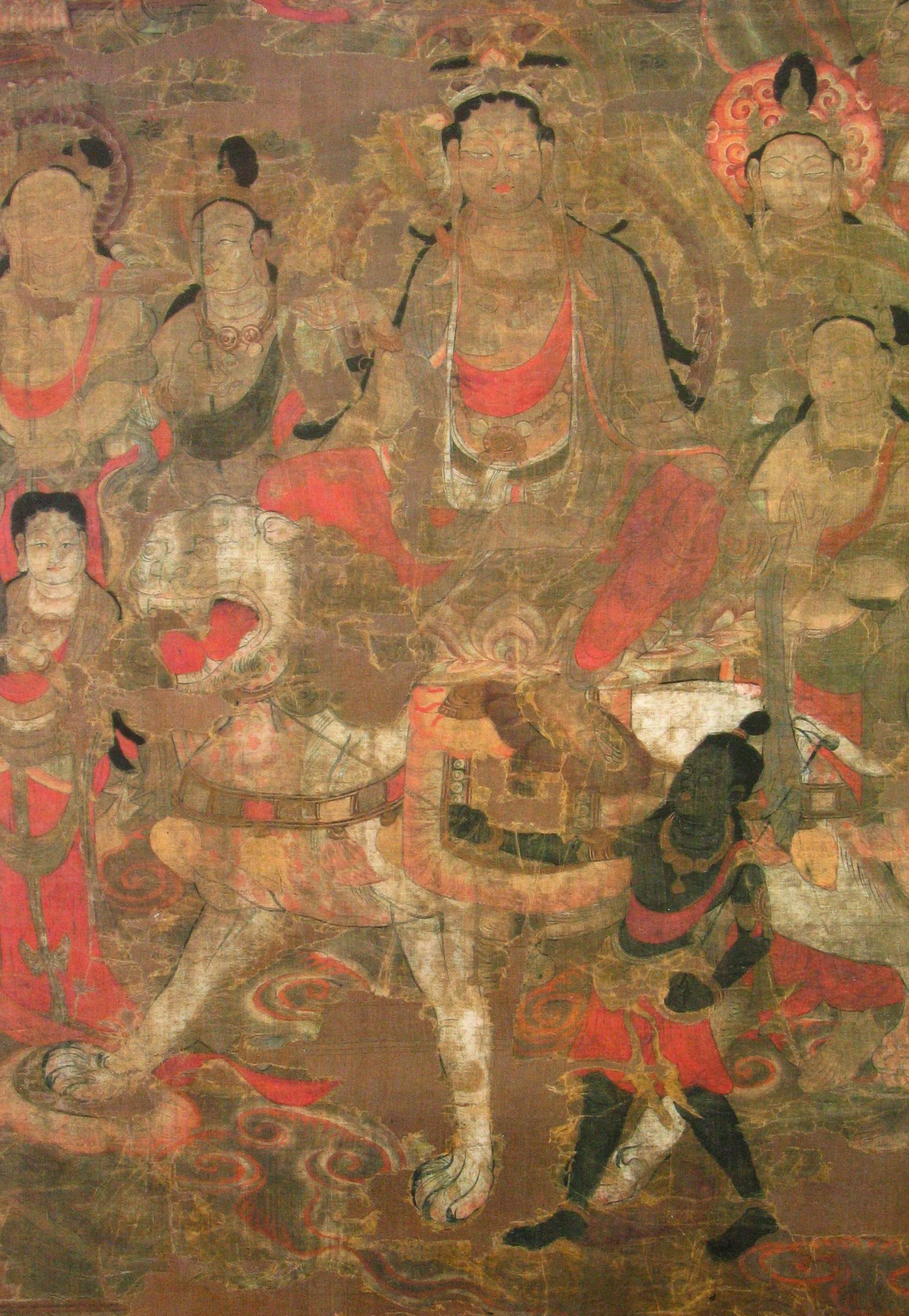
Figure 10 The statue of Manjusri riding a lion on silk painting in Dunhuang in the 9th century
The silk painting of Manjusri Bodhisattva riding a lion (Fig. 10) undoubtedly belongs to the powder version of image inheritance and order. On the north wall of the tunnel in Dunhuang Cave 220, a shop of Manjusri was stripped in October 1975. It was painted in the third year of Tongguang (925) of Emperor Zhuangzong of Tang Dynasty after the Five Dynasties. A new look of Manjusri Bodhisattva". Some scholars believe that Manjusri’s new style was created and painted on Mount Wutai, and there is an inscription on the mural “When the King of Khotan was persuaded to accept and support the great sage to make offerings to the King of Khotan…” In the picture, Manjusri Bodhisattva is sitting on the back of a green-haired lion, and the one on the right is wearing a The bearded and bearded man in Wuguan holds the rein in his hand and looks like he is riding a lion. According to the inscription on the head of the barbarian, he knows that he is the "King of Khotan". Since the Guiyi Army Jiedushi family and the Khotan royal family have always maintained a marriage relationship, a large number of Khotan auspicious images, patron saints and supporters appeared in the Dunhuang caves.
Mount Wutai is one of the royal temples of the Tang Dynasty. When the murals were created, they should have come from Chang’an’s powder. They were based on similar powder brushes used by royal craftsmen on the stone coffin of Concubine Wu Hui. However, the craftsmen at that time may have thought it was a lion tamer in the past. I just couldn't tell the difference between the different images of the lion-leader, the lion-rider, and the lion-rider. Later, because of confusion about foreign races, I compared the curly-haired and deep-eyed Westerners with the curly-haired and black-bodied Kunlun slaves of the South China Sea. The "new style" spread During the process, both the king of Khotan and the slaves of Kunlun led the lion, which were used for different occasions and venues. "New style" can be simply understood as a new style, but religious images should not be regarded as just a certain "style", but more likely to imply a new way of understanding or viewing images. The "Khotan King" replaced the "Kunlun Slave" as the lion driver in the past, which proves that the addition of foreign elements has transformed into a new style unique to the Dunhuang area.
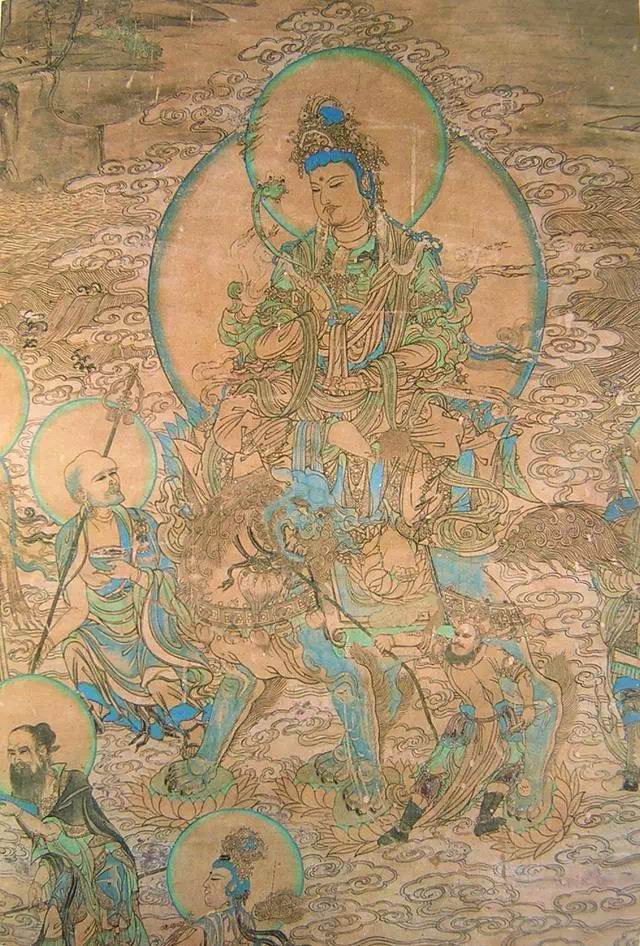
Figure 11 Manjusri Transformation in Cave 3 of Yulin Grottoes in the Middle and Late Western Xia Dynasty, where Kunlun slaves became warriors from the Western Regions
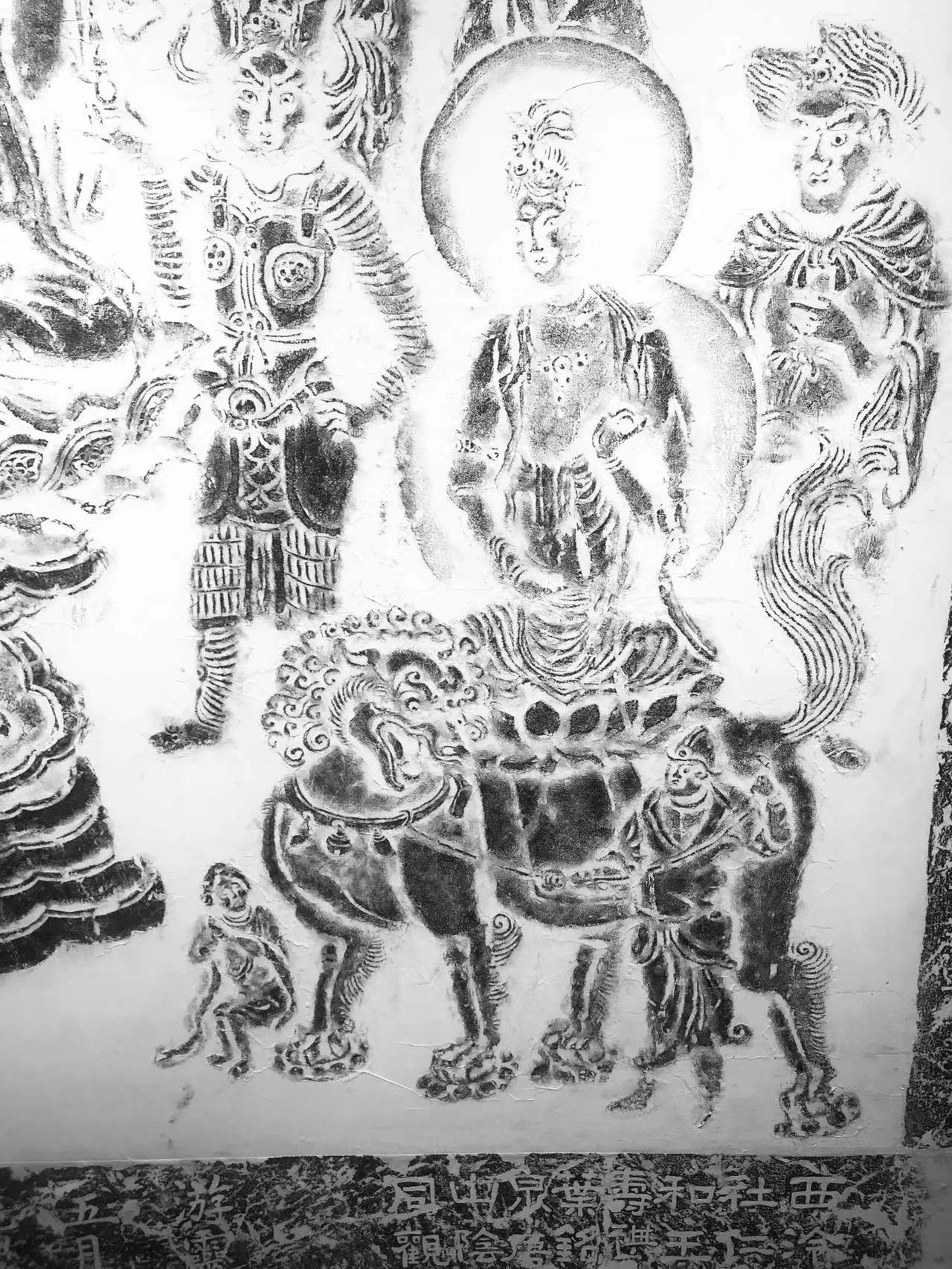
Figure 12 The lion-leader of Lushena Buddha in Qinglin Cave, Feilai Peak, Hangzhou, Northern Song Dynasty
We have observed that the king of Khotan and the Kunlun slave holding a lion are not only found in the Dunhuang Grottoes, but also in the East Thousand Buddha Caves in Guazhou and the Bezekrik Grottoes in Turpan. The Xixia silk paintings were unearthed in Heishui City, Inner Mongolia (Figure 11), Japan There are also statues and prints in the Chion-in Temple of the Buddhist temple (the statue of Manjushri riding a lion is hidden in the womb of the Buddha statue in Qingliang Temple, Kyoto, Japan). The spread is so wide, it all comes from Chang'an. In the Northern Song Dynasty, there are sculptures of Lushena Buddha and the lion-carrying man in Qinglin Cave, Feilai Peak, Hangzhou (Figure 12) and Dazu Beishan sculptures in the Southern Song Dynasty, which shows that the painters of each era did not create them for a long time, especially the folk craftsmen would not abandon the existing ones. There is a paradigm to identify innovative patterns, but it is the embodiment of the orderly inheritance of the pastel patterns.
In the last years of Tianbao, the Anshi Rebellion caused great turmoil in the two capitals. A large number of Chang'an artisans moved westward to a safer place in Hexi. Dunhuang became an important concentration of Chang'an painters and patterns. All classes of society prayed for safety. Therefore, Manjushri Bodhisattva and Jingbian paintings have been flourishing. Mogao Grottoes have added many new contents since the 9th century. Dunhuang painters repeatedly copied the contents of the drawings, some as many as dozens of shops.
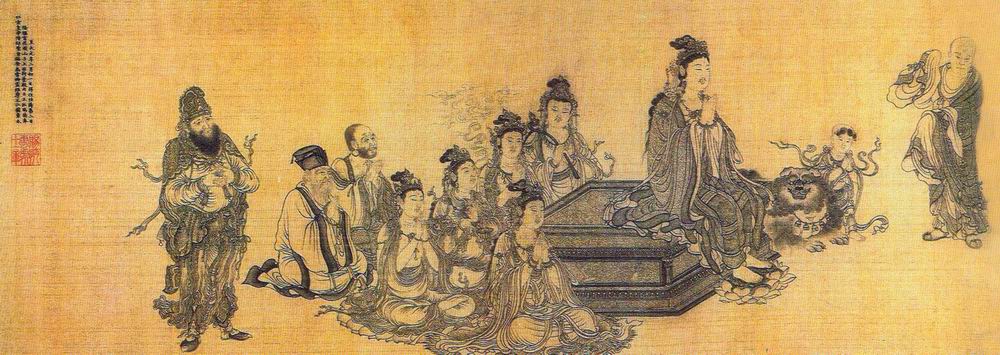
Figure 13 Vimo's performance and teaching diagram, collected by the Metropolitan Museum of America
Judging from the development and evolution of the Dunhuang mural "Vimo Change", the original popular envoys of the Central Plains emperors and envoys of foreign kings and kings asking about illnesses have a new picture book style and aesthetic style after the mid-Tang Dynasty. "Mo Yan Jiao Tu" (Wang Zhenpeng's "Vimo Bu Er Tu" in the Yuan Dynasty in the Metropolitan Museum of Art) is a famous painting (Fig. 13). In the scene where Vimo, the elder of Viyali City, asks questions and debates with Manjusri Bodhisattva, there are Bodhisattvas, disciples, goddesses, kings and other gods standing around. In particular, the old man with a beard and a beard was speculated to be the king of Khotan. In the past, the bearded old man with a tall hat, deep eyes and high nose was often regarded as the king of heaven, which was actually a misjudgment. Before the mid-Tang Dynasty, the tall-nosed and deep-eyed old men of different races were not seen in the images.
Dunhuang was actually a local kingdom of Han culture during the period of the Guiyi Army. It abandoned the negative influence of the fall of Tubo (786-848). The revived Dunhuang not only continued to prosper the art of Han Buddhism, but also was supported by different ethnic groups such as Uighur and Khotan. Infected, "Vimalakirre's Performance and Teaching Picture" is actually created on the basis of the traditional "Vimalakirre Bian" and combined with the picture book of "New Manjusri". Standing on the other side is the King of Khotan wearing a crown and a round-neck and narrow-sleeved shirt. Wearing a cloud-pattern shawl, with hands crossed in front of the chest, seven things about 蹀躞 are hung on the waist belt, and a long sword is worn. The image of the foreign king appeared frequently later (Fig. 14-15), and played the role of a patron saint.
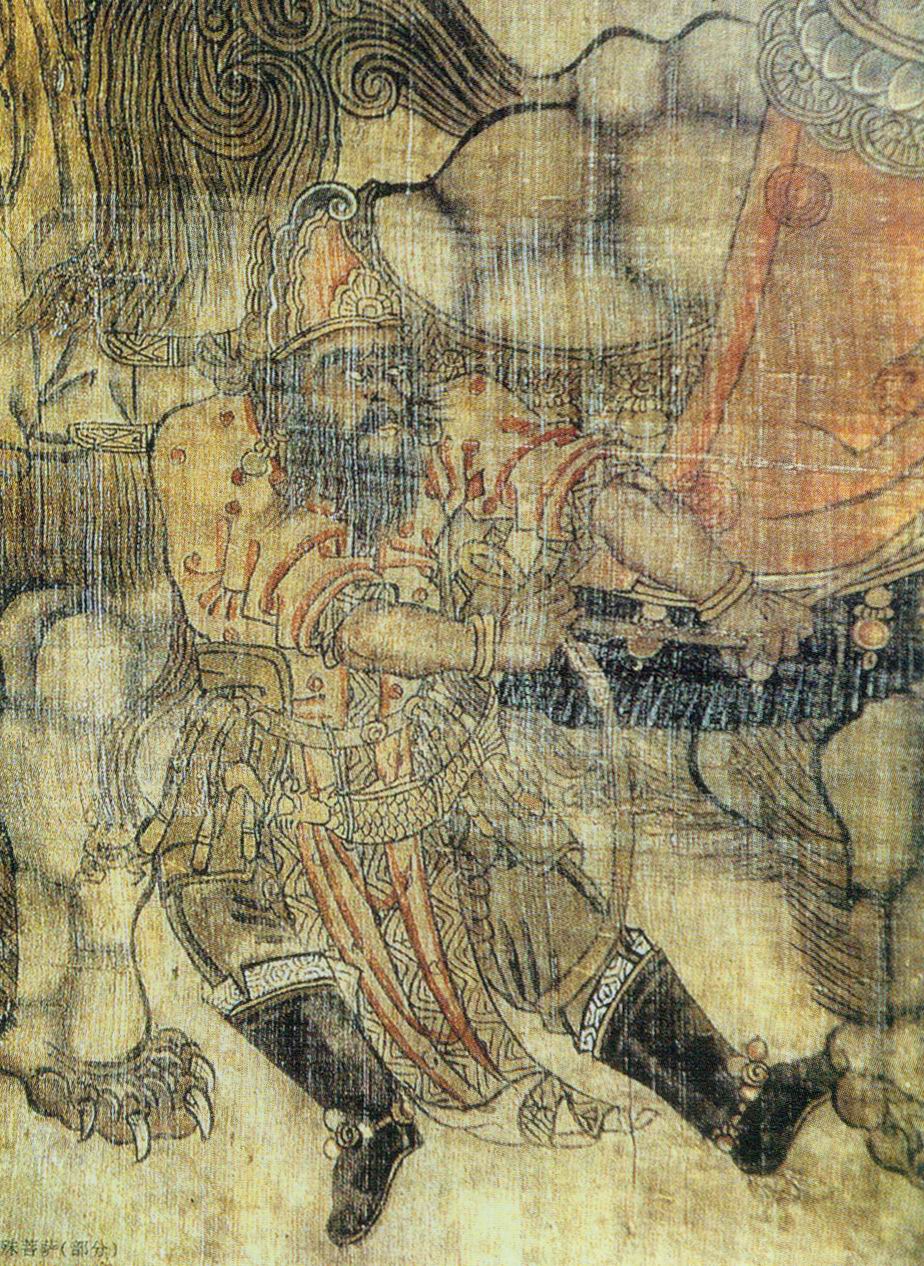
Figure 14 King Khotan of Manjusri Unearthed in Heishui City, Xixia, Russian Ermita Museum

Figure 15 King Khotan of Manjusri Bian in the 3rd Xixia Cave of Yulin Grottoes
For comparison, P.4049 "New Style of Manjusri" collected by the National Library of France, this is a white drawing on paper copied and used by a Dunhuang painter. The barbarian wears a crown on his head and has a beard all over his face. He holds the rein with his left hand and a long whip with his right hand (Figure 16). The lines of the whole drawing are relatively random, and the artist seems to have a model, bringing together various characters such as a good fortune boy, an old man, a monk leaning on a stick, etc., appearing in the picture of the puja as the envoy of Manjushri Bodhisattva.

Figure 16 White painting of Manjusri Bodhisattva and lion - P.4049 - Documents in the Sutra Cave - Bibliothèque Nationale de France
The image of Zhongshu Bodhisattva in the murals is plump, handsome, resolute and quiet. The belt on his body fluttered with the wind, and he sat gently on the lion's back. The green lion, which symbolizes wisdom and strength, steps on the red lotus with vigorous steps. In the murals of the Tang Dynasty, the Kunlun slaves who lead the lion for Manjusri are mostly flat faces, big eyes, thick lips, upturned nostrils, dark complexion, and curly hair. And the Kunlun slaves in this mural have turned into bearded and bearded warriors from the Western Regions. Later, the engravings of Manjusri riding a lion basically imitated the model of the powder version since the mid-Tang Dynasty (Fig. 17-18).
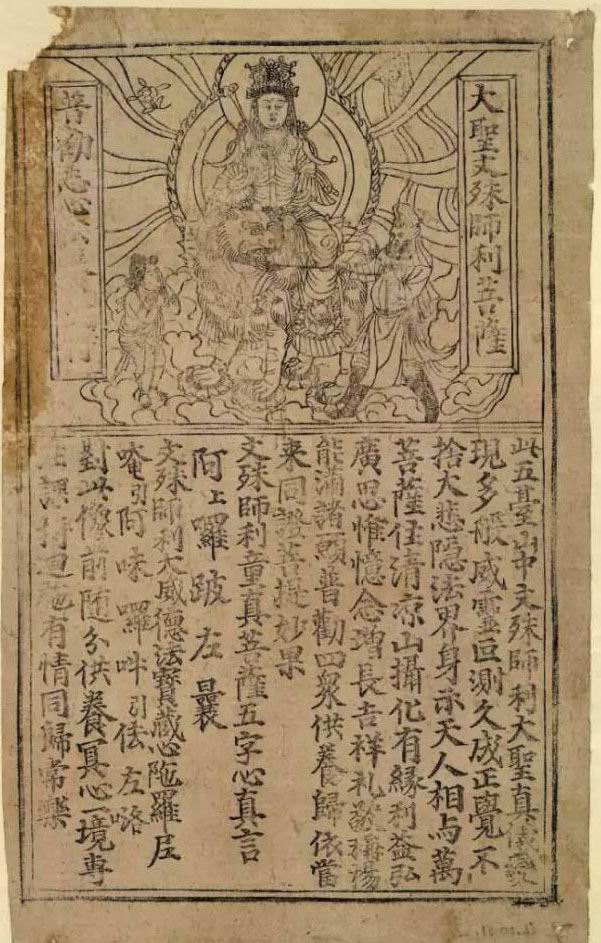
Figure 17 Engraving Manjusri Bodhisattva Riding a Lion - S.235 - Collection of the National Museum of England

Figure 18 Part of a print of Manjusri riding a lion unearthed from the Dunhuang Library Cave
Judging from the evolution of Dunhuang image styles, images of Manjushri riding a lion, Samantabhadra riding an elephant, and many attendants appeared in the heyday of the Tang Dynasty. Gu Kuang, a Jinshi in Tang Suzong's time, said: "Kunlun, riding a white elephant, always locks the master's item." , which shows that after the mid-Tang Dynasty until the period of Tubo and Guiyi Army, a fixed style has been formed. Not only the combination of surrounding characters and the landscape background have changed, but more importantly, the prototype of the Hu people leading the lion has been added to become the King of Khotan leading the lion. , King Khotan not only became the envoy of Manjusri Bodhisattva, but also highlighted the image of Hu people from other places. The statue of King Khotan in Cave 3 of Yulin Grottoes and the statue of King Khotan unearthed from Heishui City in Xixia are both the image of an elder with beard and beard. The straight nose has not changed, the straight and vertical beard has become thicker, and the clothing is obviously more Chinese than that of military generals. Regardless of the fact that the King of Khotan statues come from various places and have their own characteristics, they are all more like Chinese Dharma protectors, and they are farther and farther away from the original powder. Far. New features of warriors and nationalities have been added to their images. Local rulers, cave benefactors, creative art painters and other aspects all require "new styles" to reflect the characteristics of the times. This is also the "new style" in this period. Proof of appearance.
In the late Tang Dynasty, Dunhuang painters did not create according to the traditional Indian Buddhist scriptures, but absorbed, changed, and created new painting styles by using the line drawing manuscripts from Chang'an. It was deduced into a picture widely circulated in Dunhuang, similar to the image of the coffin of Concubine Wu Hui (Figure 19). It was deduced into a widely circulated picture in Dunhuang, and a new composition was made with the help of Manjusri patterns, but the basic pattern of Hu people leading a lion is still retained, but the details are different. P .4049 is evidence of the original drawing.
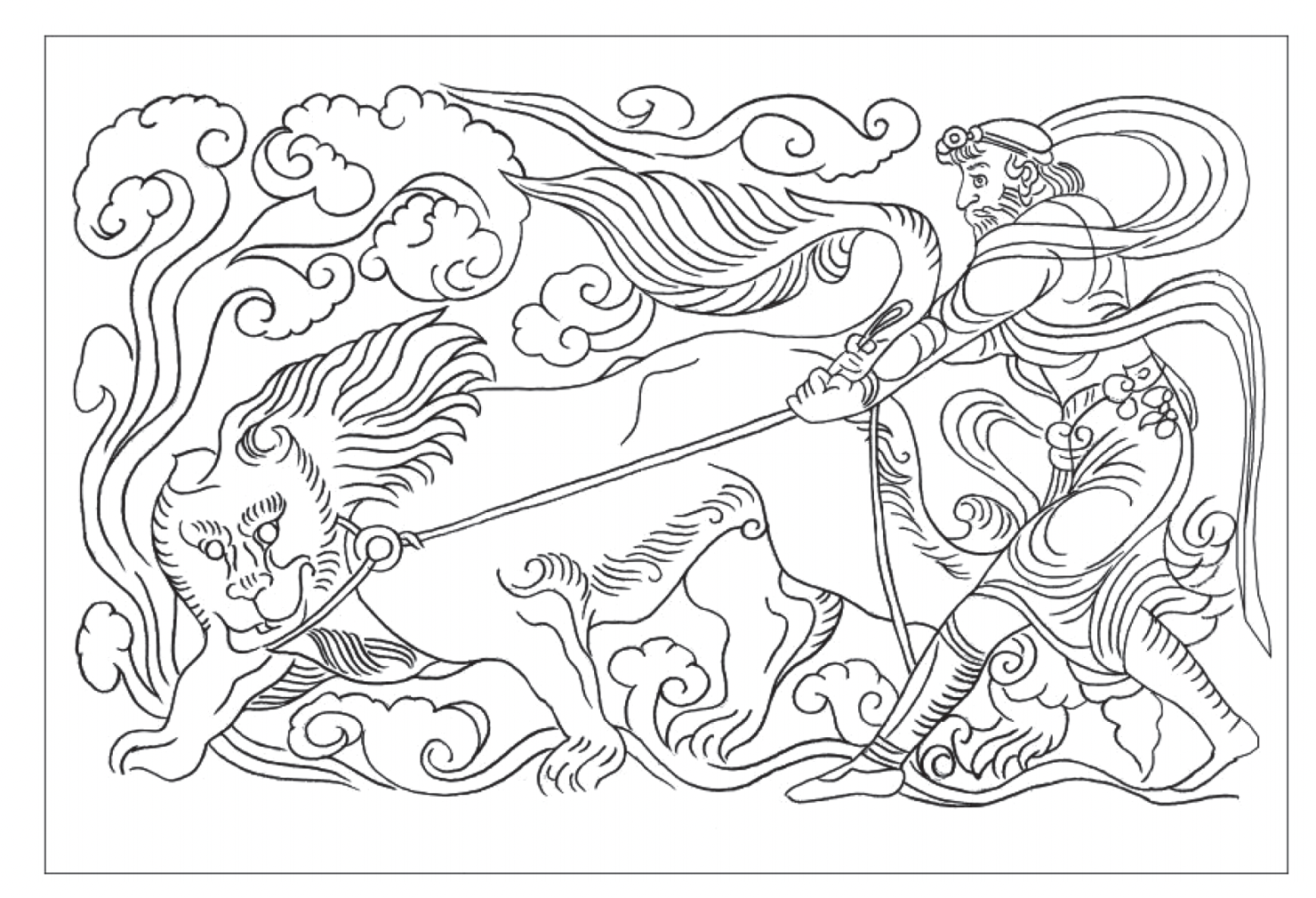
Figure 19 A copy of the warrior La God Beast on the lower right side of the front of Concubine Wu Hui's coffin
During the Cao regime in Shazhou, Dunhuang once set up a painting academy, which was engaged in the artistic creation of cave temples. The inscriptions on the scripture caves and the supporting portraits of painters in each cave indicate that the painting academy has "painting academy envoys", "knowing painters", "painting hands" and "painters" etc. Unknown creator, but the transition between Changan painters and Dunhuang painters (Fig. 20~21), it can be seen that foreign painting books have played an important role in the creation of local sketches, although some paintings are vulgar, and some are of a higher level. But they all adapted to the conceptual change of religious painting. The time span led to the following related themes in the Liao, Jin, Xixia and Song dynasties.
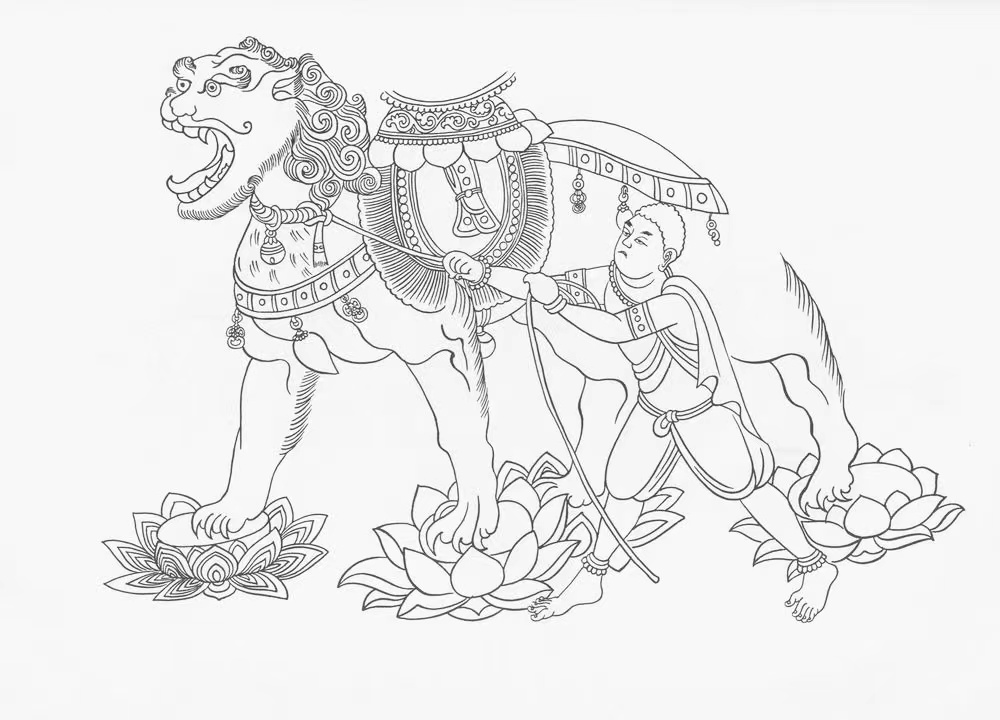
Figure 20 Copy of Dunhuang Murals Kunlun Slaves Leading Lions

Fig. 21 The figure of a lion engraved on the stone coffin of Concubine Wu Hui
None of the existing paper and silk paintings in Dunhuang have complicated or cumbersome patterns, which shows that the local painters referred to the original powder books when they pursued the Chang'an style, copied lions on paper scrolls, and practiced hand-painting. Only well-trained Only professional painters can transform the drafts into vivid mural creations (Figure 22).

Figure 22 White painted lion - scriptures in the Sutra Cave - P.4082 - Collection of Bibliothèque Nationale de France
After comparison, we can see that the style pulse of artistic images from Chang'an to Dunhuang is very clear.
First of all, the lion-leader: from a full-face bearded old man leading a lion and running along, to a Kunlun slave or the king of Khotan holding a giant lion and waiting to bow to the Bodhisattva.
Secondly, the lion rider: From a bearded old man riding a lion on the back of a lion, to Manjushri sitting cross-legged on a lion with drooping legs, the lion rider becomes a cross-legged lion rider.
Thirdly, the lion driver: from the Western Hu people who walked quickly to control the lions to the Kunlun slaves who stepped to control the lions, the image of King Jingli of Khotan replaced the Kunlun slaves, and transformed from unruly to tame and gentle.
What is the "core" of the changes from the prosperous Tang Dynasty to the mid-Tang Dynasty? The "variation" in the dissemination of culture and art has become the mainstream of Huahua and Buddhism, just like the transformation of Fusu paintings from barbarians with high noses and deep eyes to Han people with flat faces in the Song Dynasty. In terms of painting techniques, the spread of line drawing techniques started from ——Li Gonglin—the painters of Jin and Yuan Dynasties, all come from the same strain. All kinds of lion-leaders and alienated images are proof.
The lion is a "benchmarking animal of foreign culture". The meaning of the lion has long gone beyond religion. The original depiction of the lion has the practical purpose of offering Buddhist offerings. After drawing the composition form of the lion, he created a new form of expression.
In terms of image evolution, lions have changed from deterrent and brave to majestic but not angry, and from harmonious human-lion to gentle and obedient, until the folk theme of "lion playing hydrangea" in later generations, lion dance performances at festivals and feasts in various places, "huahua The standardized role of "transformation" is becoming more and more peaceful. The lion statue in Ming and Qing Dynasties squats silently at the door like a castrated pug. The once magnificent grassland seems to be a kind of eyes that are destined to find nothing. The lion has become so commonplace, it is no longer a lion roaring. The lion is completely divorced from the foreign artistic style of the Western Regions. Colleagues in the academic circle can understand it for themselves, and the author will not repeat it.
From the images of the lion-leader, lion-rider, and lion-driver portrayed by foreign lines in the Tang Dynasty to the new image of Manjusri Bodhisattva that changed or mutated after the mid-Tang Dynasty, it can be seen that the powder copies of the classic works will not be lost due to the loss of time. It is overshadowed, and it will not lose its connection because it is thousands of miles away. On the contrary, it will be spread that the Quartet is constantly exuding the vitality of life in the step-by-step "huahua". Cultural shared, shared, common interface.
Note: The author of this article is a Distinguished Professor of the Advanced Research Institute of Humanities and Social Sciences of Shaanxi Normal University, and a part-time researcher of the Silk Road Research Center of Dunhuang Academy. This article is the research result of the cultural attributes of foreign images of Dunhuang murals of the 2020 National Social Science Fund's unpopular special project, and the approval number of this project is 20VJXT014. The original title of the article is "From the lion-leader, the lion-rider to the lion-rider--A New Exploration of the "New Style" of Dunhuang Manjusri Bodhisattva", the full text was originally published in the fifth issue of "Dunhuang Studies" in 2022, and the surging news was authorized by the author When published, there are editors.

